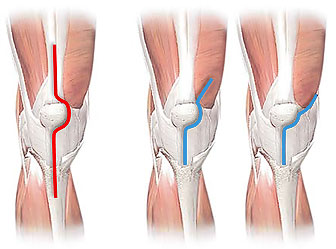So, you’ve damaged your knee and your surgeon has advised PCL reconstruction surgery. You have acute pain in the affected knee and you want to get quick relief.
Education on PCL and the injury you are suffering from could give you some relief from the pain and suffering
PCL stands for Posterior Cruciate Ligament, one of the ligaments placed at the back of the knee. Your surgeon has found that a ligament is torn and it is what causes acute pain. Also, it has destabilized your knee. While physiotherapy could provide some relief from the pain, but reconstruction of the ligament is the best option.
Reconstruction of a torn ligament
For PCL reconstruction surgery, your surgeon will replace the torn ligament with a new tissue graft either taken from your body or a deceased donor. The new graft will take place of the torn ligament. The surgeon will staple the graft on the affected knee.
Let’s see how a new graft is placed
The surgery is performed with the help of a specific tool called an arthroscope. Like an endoscope, it also as a camera and source of light for the camera to see the internal organs. An incision is made on the affected knee to send the arthroscope for examination. The arthroscope gives a clear view of the broken ligament and paves way for the reconstruction.
In PCL reconstruction surgery, surgeons have to make several incisions to insert various tools like an arthroscope and stapler to replace a broken ligament with a new tissue graft. The tissue graft is attached to the knee with staples and the incisions are closed with stitches.
Technology has made the surgery advantageous in the following ways:
- It is minimally invasive surgery as incisions made to insert surgical tools are smaller in size
- The patient feels lesser pain due to the minimal invasion
- A few staples and stitches used for closing the incisions take little time in recovering
Recovery period
The good thing about PCL reconstruction surgery is its faster recovery period. While you could require crutches for a couple of days post-surgery, you will start walking within 2 weeks and you could start running within 6 weeks depending on your age and overall physical condition.
Your surgeon will suggest physiotherapy that will start 1-4 weeks after the surgery and continue for 6-12 months depending on the rate of recovery. But you can expect quick recovery with the help of a comprehensive rehabilitation program.



